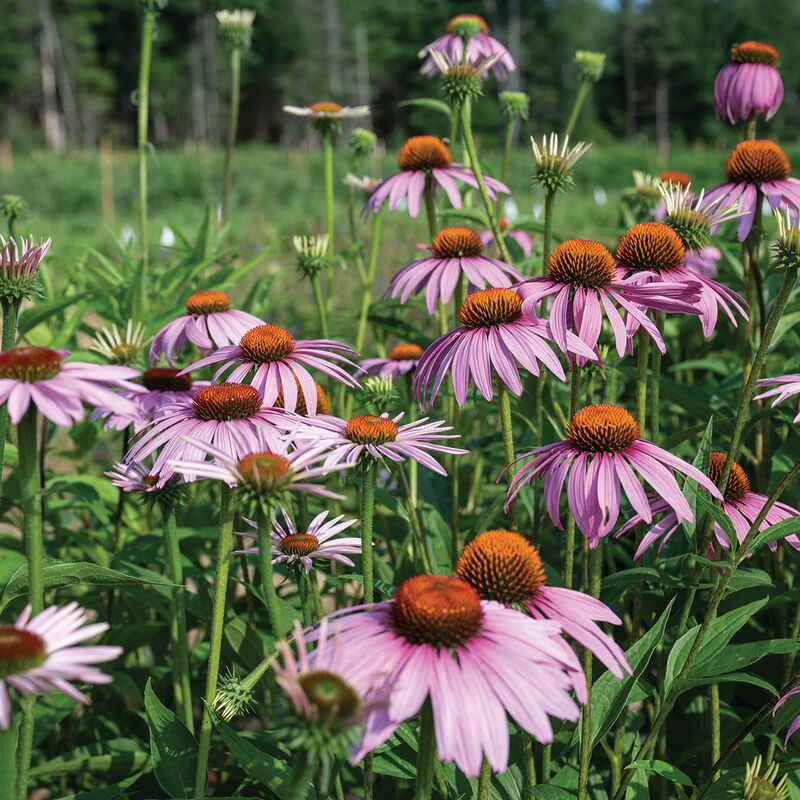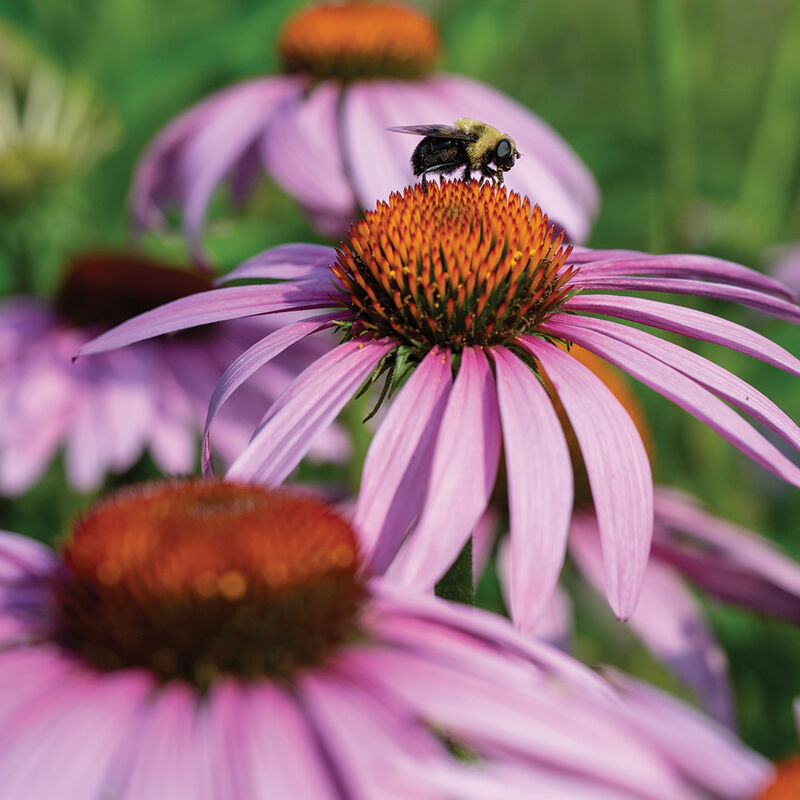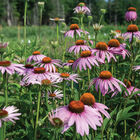Echinacea purpurea Echinacea Seed
Echinacea purpurea Echinacea Seed
Common purple coneflower.
Easy-to-grow echinacea. Vigorous plants with large, purple-petaled flowers. Fibrous roots are easy to harvest (other species have taproots). Attracts and is a food source for bees. Also known as purple coneflower and eastern purple coneflower. Normally grown for 3–4 years for harvest of sizeable roots. Perennial in Zones 3–10.Specs:
DAYS TO GERMINATION:
10-15 days at 65-70°F (18-21°C).SOWING:
Transplant (recommended): Sow 8-10 weeks before planting outside. Transplant into cell packs or larger containers after the first true leaves appear, 30-40 days after sowing the seed. Harden off and transplant outside in late spring or early summer.DIRECT SEED:
Sow in spring when soil is warm, 65°F (18°C). Sow in groups of 3-4 seeds, 1/8" deep. Thin to one plant. Sow in the fall to allow the oscillating temperatures and natural rain to stimulate germination.LIGHT PREFERENCE:
Sun. Will tolerate partial shade.SOIL REQUIREMENTS:
Average, well-drained soil.PLANT SPACING:
18-24". Division is necessary only when the plants appear crowded.HARDINESS ZONES:
Zones 3-10.HARVEST: For fresh flowers, harvest when petals are expanding. For harvest of fresh cones, the center should be raised and golden-colored. For dried flowers, after removing petals, hang to dry. For dried cones, remove petals before hanging.USES:
Cut flower. Seed heads can be used fresh or dried. For beds, borders, mass, or wildflower plantings.SCIENTIFIC NAME:
Echinacea spp.ALTERNATE NAMES:
Coneflower, purple coneflower, eastern purple coneflowerJohnny's is committed to your success, every step of the way.
We want you, our customer, to be 100% satisfied with all of our seeds, tools, and supplies.
If anything you purchase from us proves unsatisfactory, we will either replace the item or refund the purchase price.








